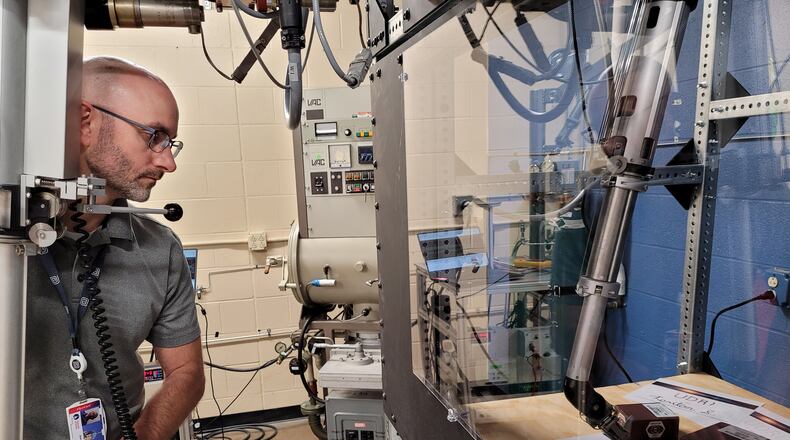NASA announced Tuesday that a team led by Zeno Power — a developer of commercial radioisotope power systems, with offices in Washington, D.C. and Seattle — has been awarded $15 million to develop an americium-241 radioisotope generator for lunar surface missions.
The team for the program, called “Harmonia,” includes the University of Dayton Research Institute (UDRI), Blue Origin, Intuitive Machines Inc., NASA Glenn Research Center, NASA Marshall Flight Center and Sunpower Inc.
UDRI will partner with Zeno on the project to design and develop the heat source for the system. UDRI and NASA Glenn are the only two Ohio partners in the project.
UDRI is anticipating $2.8 million from its work with Zeno, a UDRI spokeswoman said.
It’s not stretching the case to say that this kind of generator has a technological lineage that stretches back to what was the Mound nuclear weapons complex in the Cold War days of the 1950s — technology that UDRI went on to refine, Chad Barklay, a UDRI scientist, said in an interview.
“It has direct linkage,” Barklay said. “There’s no question about it.”
Readers may recall that former Mound complex scientists with UDRI helped develop a radioactive plutonium generator that powered the Mars Perseverance rover a couple of years ago.
Barklay is a former Mound employee who worked on the Perseverance generator with a UDRI colleague, engineer Allan Tolson.
Still, Barklay cautioned against making too close a comparison between the Mound-bred power system and the one that UDRI will help Zeno Power develop.
But he added: “What we’re working on here kind of leverages the historical design cues of those heritage units in the past. We’re essentially incorporating a lot of those elements into the new design for this particular application.”
The basic concept is the same: Build a power source that converts heat generated by the decay of radioisotopes, offering a supply of energy for objects on the cold lunar service.
That kind of tech found its way into Apollo mission science experiments in the 1960s and early 1970s, Barklay said.
“For us to kind of carry on that legacy and tradition is an outstanding opportunity,” he added. “It’s hard to put into words the meaningfulness of having something from Dayton be back on the moon.”
Operations during the two-week lunar night and in permanently shadowed regions on the moon are a challenge due to extreme cold in those environments, Zeno Power said in a release on the NASA award.
Such generators for space applications have historically been powered by plutonium-238 from the U.S. Department of Energy, with a fuel supply chain sufficient to power NASA’s marquee missions, Zeno Power noted.
The isotope to be used in this case, Americium-241, is a long-lived isotope with favorable thermal and radiation profiles that can complement current plutonium-238 based generators, Zeno said.
The generators developed with the award could allow NASA assets to survive and operate during those long nights, extending missions from two weeks to several years, the company said.
Harmonia’s goal is to develop flight-ready technology for a 2027 lunar surface demonstration.
“Project Harmonia will provide the technology to transform the moon from a location darkened by night and shadow to one enlightened by science and exploration, ultimately for the good of the nation and humankind,” Tyler Bernstein, chief executive and co-founder of Zeno Power, said in a release.
Barklay estimated that some 100 UDRI employees will contribute to the project or have their hands on the new generator in some way.
About the Author

